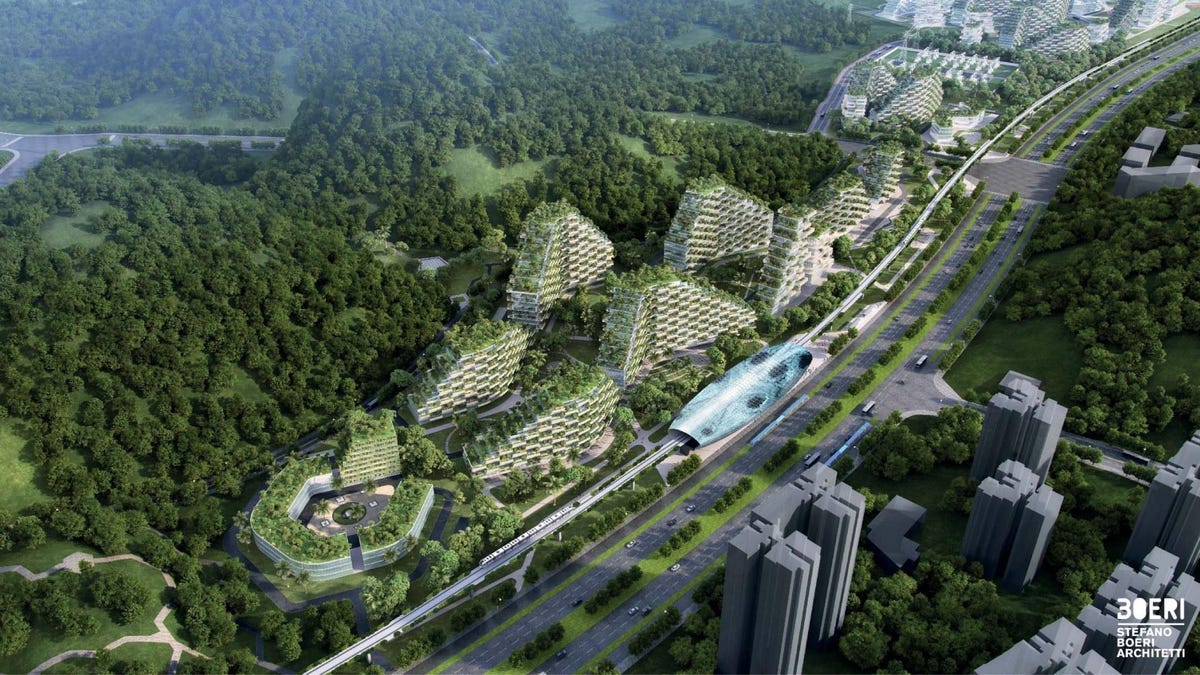Can a 'Forest City' clean China's polluted air?
Architect Stefano Boeri has already designed "Vertical Forest" skyscrapers for three Chinese cities. Up next: a new "Forest City" to fight pollution.

Liuzhou Forest City, artist's rendering
A new "Forest City" intended to fight air pollution just broke ground in China.
Designed by Stefano Boeri, an Italian architect known for his "Vertical Forest" plant-covered skyscrapers, the Liuzhou Forest City will house some 30,000 residents and is fast-tracked for completion by 2020, according to a release from Boeri's firm.
China's air pollution problem is notorious, with urban areas at times seeing particulate levels that greatly exceed those found in the middle of forest fires. Smog is related to a third of deaths in China, killing some 1.1 million people a year, and is estimated to cut lifespans by 5.5 years in China's north. In response, the Chinese government is embracing some innovative and unconventional strategies to cope -- including projects like the Liuzhou Forest City.
The Forest City is being built over 175 hectares along the banks of the Liu River in Liuzhou, a mountainous part of Guanxi Province famed for its spectacular karst formation landscapes. The ambitious project claims the city will absorb almost 10,000 tons of CO2 and 57 tons of pollutants per year and produce approximately 900 tons of oxygen by blanketing its buildings, parks and streets with almost 1 million plants and 40,000 trees from over 100 different species.
The development will be connected to Liuzhou proper by a high-speed electric rail line and use geothermal energy for its interior air conditioning and solar panels for electricity. In addition to cleaning the surrounding air, the profusion of plant life should reduce the average air temperature, create noise barriers and provide a friendlier habitat for animals, birds and insects.
Boeri hopes this model of sustainable urban architecture will be replicated throughout China. "Vertical forest" complexes modeled after his famous project in Milan are already underway in Nanjing, Shanghai and Shenzhen. There may also be a second "Forest City" in the works, reports The Guardian, this time in northern China near Shijiazhuang, one of the most polluted regions in the country. Even more than the Liuzhou project, a green city in China's north would test whether this innovative concept is a practical answer to China's pollution crisis.
CNET Magazine: Check out a sample of the stories in CNET's newsstand edition.
Logging Out: Welcome to the crossroads of online life and the afterlife.

